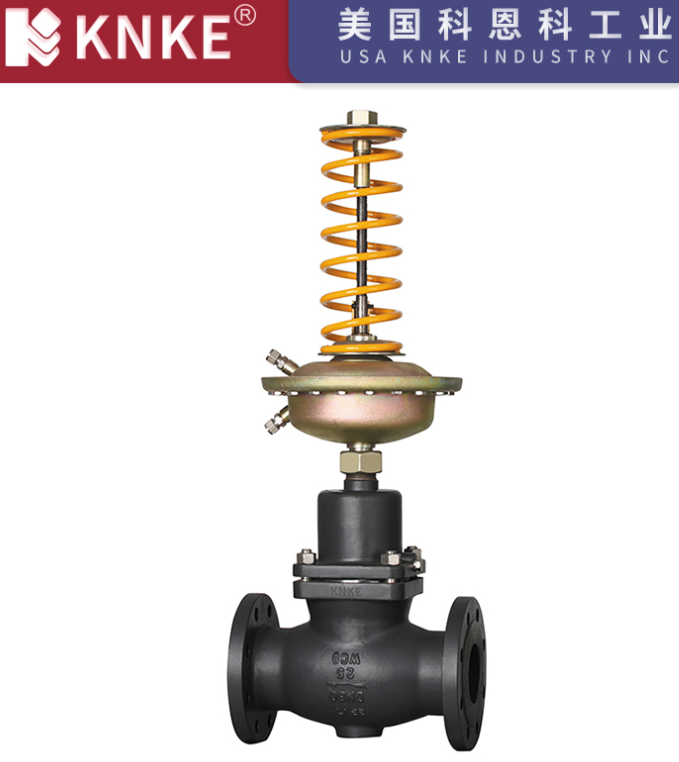What Are the Types of Control Valves?
Control valves are essential to regulating fluid systems in modern industry. They control variables such as flow, pressure, temperature, and level to keep operations stable and efficient. Because industrial processes vary, engineers rely on different types of control valves to suit specific conditions. These classifications are based on actuation method, structure, and function.
1. Classification by Actuator Power Source

Pneumatic Control Valves
Powered by compressed air, pneumatic valves respond quickly and are reliable in many settings. They include several forms—diaphragm, globe, angle, butterfly, three-way, and ball valves. Globe and angle types are compact and ideal for small pipelines. In contrast, three-way valves are used to divert or switch the direction of flow.
Electric Control Valves
Unlike pneumatic types, electric valves use motors for precise actuation. Therefore, they are commonly found in systems that require accurate modulation over longer distances.
Hydraulic Control Valves
Instead of air or electricity, hydraulic valves depend on pressurized fluids like oil. Consequently, they are particularly effective in heavy-duty applications involving high pressure or large-diameter pipes.
Hybrid Control Valves
Some systems benefit from combined actuation. For instance, a valve may use both electric and pneumatic systems to achieve enhanced performance in dynamic environments.
Self-Operated Control Valves
These valves function without external power. They automatically adjust based on pressure or temperature changes in the process. In particular, types include pressure regulators, temperature regulators, and differential pressure controllers.
2. Classification by Structural Design
Linear Motion Valves
This group includes single-seat, double-seat, cage-guided, angle, three-way, and diaphragm valves. Cage-guided types reduce noise and provide stable flow characteristics. Meanwhile, diaphragm valves use a flexible membrane, making them ideal for corrosive or aggressive media.
Rotary Motion Valves
Included in this category are butterfly, ball, gate, and eccentric rotary valves. Butterfly valves offer large flow capacity with a compact design. On the other hand, ball valves ensure tight sealing and are preferred for viscous or particle-laden fluids.
Specialized Structures
Some valves are designed for very specific purposes. For example, needle valves control extremely low flow rates, while multi-stage cage valves are used to manage high-pressure drops with minimal vibration.
3. Classification by Function and Characteristics
By Control Function
- Modulating valves adjust flow or pressure continuously.
- On-off valves fully open or close the fluid path.
- Combination types offer both modulation and shutoff, improving system flexibility.
By Flow Characteristics
- Linear: Flow changes in direct proportion to valve opening.
- Equal Percentage: Flow increases slowly at first, then more rapidly—ideal for variable loads.
- Parabolic: Offers control behavior between linear and equal percentage.
- Quick Opening: Delivers high flow immediately, suitable for emergency applications.
By Bonnet Design
Valves use different bonnet structures to handle pressure and temperature variations. For instance, extended bonnets support cryogenic uses, while pressure-sealed designs ensure tight containment under extreme conditions.
4. Other Common Types
Hydraulic Valves for Water Control
In water supply and irrigation, these valves regulate flow, maintain levels, and manage system pressure.
Solenoid Valves
Solenoid valves switch rapidly using electromagnetic coils. In addition, they are compact and widely used in automation systems requiring fast response.
Digital and Smart Valves
Modern systems increasingly adopt intelligent valves. These integrate sensors, communication protocols, and remote diagnostics. As a result, they support predictive maintenance and adaptive control strategies.
5. Typical Applications
Control valves are used across industries such as oil and gas, chemicals, power generation, pharmaceuticals, and food processing. Selecting the right valve involves evaluating fluid type, system layout, operating pressure, and required control precision. When matched properly, valves contribute to process stability, reduced energy use, and improved system safety.
